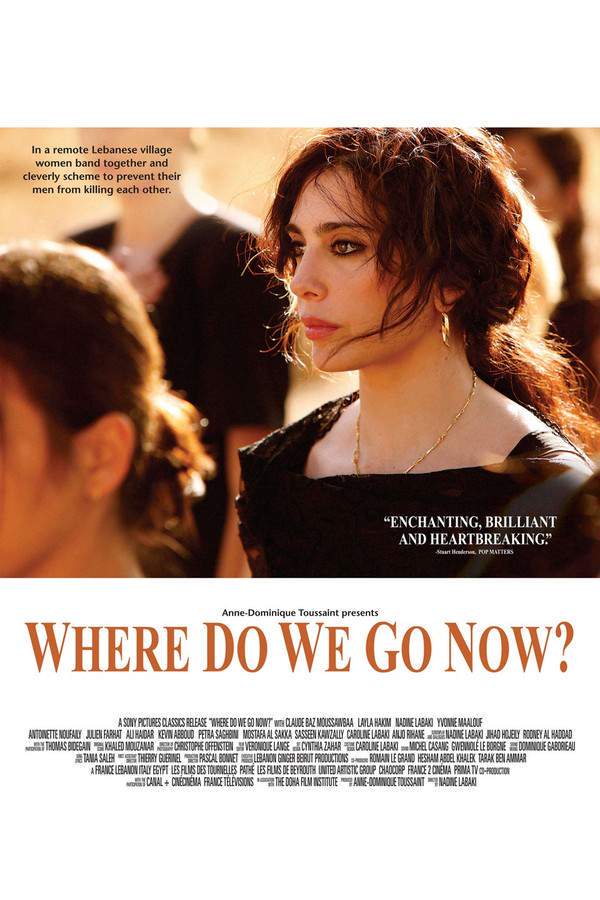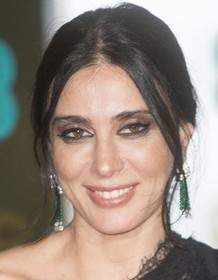Where Do We Go Now? 2012

In a Lebanese village where Christians and Muslims live side-by-side, the women devise elaborate schemes to prevent conflict between the two communities. When tensions rise due to a dispute over a valuable olive tree, the women resort to increasingly outlandish tactics to maintain the fragile peace. Their methods range from staging miraculous events to importing distractions, all in an effort to keep the men from escalating the situation into a full-blown feud and preserve the village’s unique harmony.
Does Where Do We Go Now? have end credit scenes?
No!
Where Do We Go Now? does not have end credit scenes. You can leave when the credits roll.
Meet the Full Cast and Actors of Where Do We Go Now?
Explore the complete cast of Where Do We Go Now?, including both lead and supporting actors. Learn who plays each character, discover their past roles and achievements, and find out what makes this ensemble cast stand out in the world of film and television.
External Links and Streaming Options
Discover where to watch Where Do We Go Now? online, including streaming platforms, rental options, and official sources. Compare reviews, ratings, and in-depth movie information across sites like TMDb, Wikipedia, Rotten Tomatoes or Metacritic.
Ratings and Reviews for Where Do We Go Now?
See how Where Do We Go Now? is rated across major platforms like IMDb, Metacritic, and TMDb. Compare audience scores and critic reviews to understand where Where Do We Go Now? stands among top-rated movies in its genre.

60
Metascore
7.5
User Score


53%
TOMATOMETER

73%
User Score

74
%
User Score

3.9
From 375 fan ratings

3.57/5
From 7 fan ratings
Take the Ultimate Where Do We Go Now? Movie Quiz
Challenge your knowledge of Where Do We Go Now? with this fun and interactive movie quiz. Test yourself on key plot points, iconic characters, hidden details, and memorable moments to see how well you really know the film.
Where Do We Go Now? Quiz: Test your knowledge about the complex dynamics and themes of 'Where Do We Go Now?' set in a war-torn Lebanese village.
What major theme is explored in this film?
Gender dynamics amidst civil unrest
Political corruption
Rural agricultural practices
Isolationism
Show hint
Full Plot Summary and Ending Explained for Where Do We Go Now?
Read the complete plot summary of Where Do We Go Now?, including all major events, twists, and the full ending explained in detail. Explore key characters, themes, hidden meanings, and everything you need to understand the story from beginning to end.
Where Do We Go Now? unfolds the poignant tale of a secluded Lebanese village, where both Muslims and Christians coexist. This village, encircled by landmines and accessible solely by a narrow bridge, becomes a microcosm of the civil unrest plaguing the country. The women of this village embark on a mission, employing various strategies with mixed results, to keep their men oblivious to the escalating conflict. They sabotage the village radio and eventually destroy the community’s only television.
The narrative kicks off with a young boy named Roukoz, who, accompanied by his cousin Nassim, undertakes the crucial task of venturing outside the village to retrieve essential supplies such as soap, utensils, and newspapers. Roukoz resides with Nassim’s family, mourning the loss of Nassim’s father. In a moment of unfortunate clumsiness, Roukoz attempts to repair the church speakers but falls, shattering the cross in the process.
As the plot unfolds, we meet several pivotal characters: the village mayor and his wife Yvonne](/actor/yvonne-maalouf), the cafe owner Amal, who captivates the attention of Rabih, the village painter, and Nassim’s brother Issam along with his wife Aida, not to mention the village priest and the imam. During a Sunday mass, the priest addresses the congregation, emphasizing the need for church repairs while attributing the broken cross to the wind. He reassures the attendees, reminding them that their fellow Muslims are not at fault.
Tensions rise when the imam discovers goats roaming the mosque, pleading with his community not to blame the Christians. Despite his efforts, a confrontation arises as a Muslim man points fingers at the Christians, igniting a brief altercation.
As the village teeters on the brink of chaos, the women cleverly band together to prevent their men from escalating the violence. They go so far as to hire Ukrainian dancers for entertainment. However, tragedy strikes when Nassim falls victim to interfaith violence, causing the women to confront their most significant challenge yet. In a bold move to regain control, they concoct sweet pastries laced with hashish for the men, confiscating their weapons in the process. Upon waking, the men are met with a startling sight: all the Christian women disguised in Muslim garb and vice versa. This audacious act presents a daunting challenge to their husbands and sons, forcing them to confront their sectarian prejudices.
To everyone’s astonishment, Nassim’s funeral proceeds peacefully, culminating in a transformed dynamic where the men look to the women for guidance and direction, hinting at the possibility of unity amidst division.
Uncover the Details: Timeline, Characters, Themes, and Beyond!

Coming soon on iOS and Android
The Plot Explained Mobile App
From blockbusters to hidden gems — dive into movie stories anytime, anywhere. Save your favorites, discover plots faster, and never miss a twist again.
Sign up to be the first to know when we launch. Your email stays private — always.
Watch Trailers, Clips & Behind-the-Scenes for Where Do We Go Now?
Watch official trailers, exclusive clips, cast interviews, and behind-the-scenes footage from Where Do We Go Now?. Dive deeper into the making of the film, its standout moments, and key production insights.
Where Do We Go Now? Other Names and Titles
Explore the various alternative titles, translations, and other names used for Where Do We Go Now? across different regions and languages. Understand how the film is marketed and recognized worldwide.
Quick Links: Summary, Cast, Ratings, More

What's After the Movie?
Not sure whether to stay after the credits? Find out!
Explore Our Movie Platform
New Movie Releases (2026)
Famous Movie Actors
Top Film Production Studios
Movie Plot Summaries & Endings
Major Movie Awards & Winners
Best Concert Films & Music Documentaries
Movie Collections and Curated Lists
© 2026 What's After the Movie. All rights reserved.
















